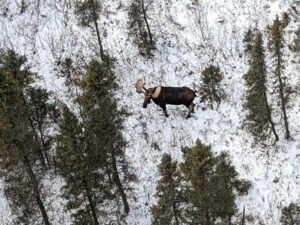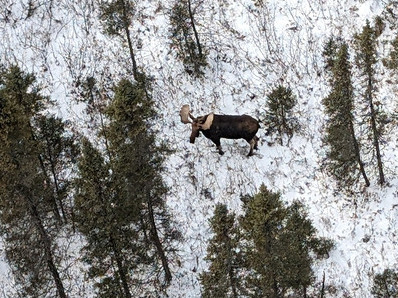Minnesota’s moose population has remained relatively stable for nearly a decade. The most recent population estimate is approximately 3,470 animals, according to the results of the Minnesota Department of Natural Resources 2024 population survey.
Results continue to suggest that after a steep decline from a population estimate of approximately 8,000 in 2009, Minnesota’s moose population appears to have stabilized and has fluctuated around 3,700 animals in recent years.
While estimates suggest continued stability in the population and reproductive success, Minnesota DNR researchers point out that Minnesota moose remain at risk given the long-term trends. Presently, the long-term survey trends indicate the moose population has declined by approximately 60% since the mid-2000s. Climate change, parasites, and predator impacts on calf survival all play a part in the long-term survival of the moose population.
Both the Fond du Lac Band of Lake Superior Chippewa and the 1854 Treaty Authority contributed funding and personnel for the 2024 annual survey. The survey is available on the Minnesota DNR’s moose management webpage (mndnr.gov/moose)





